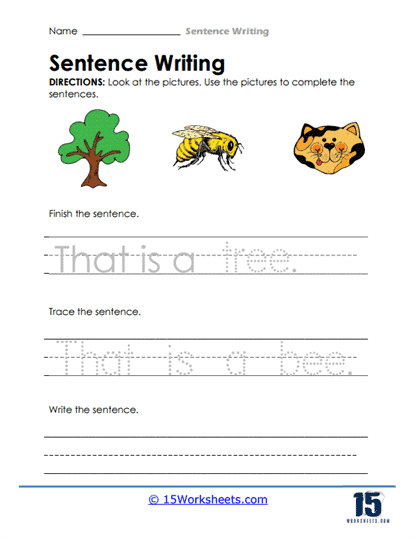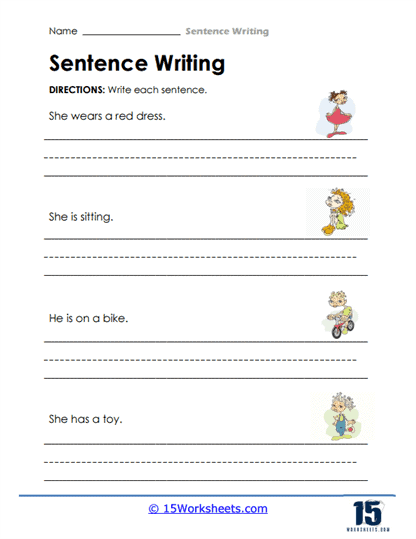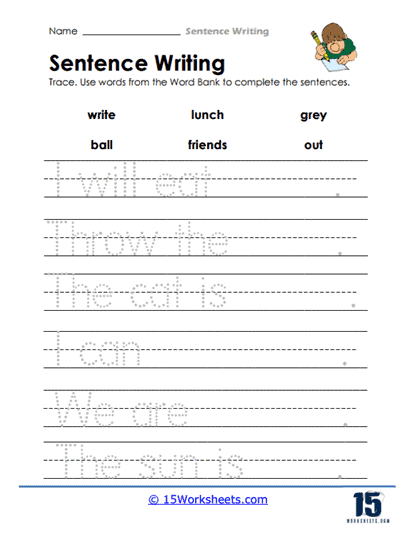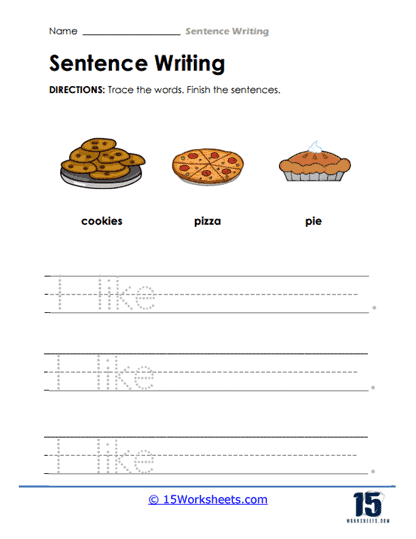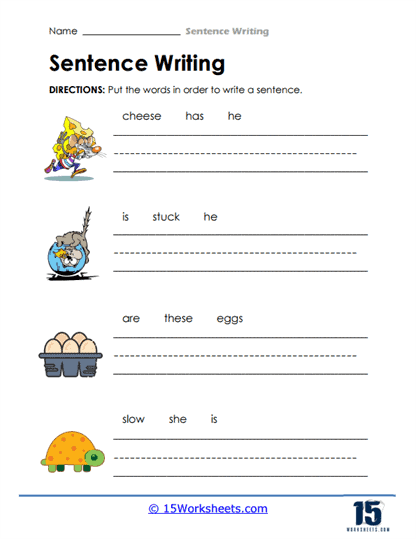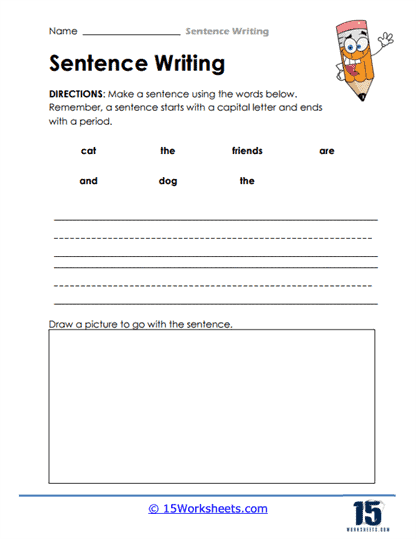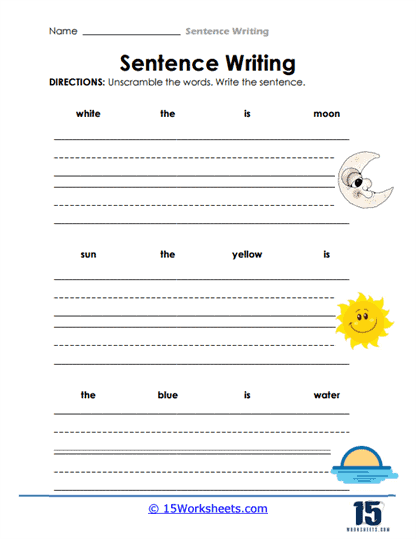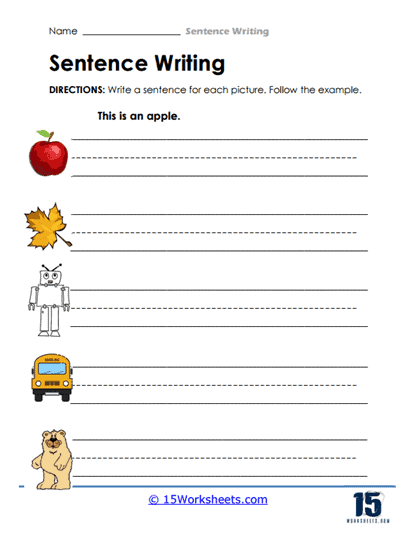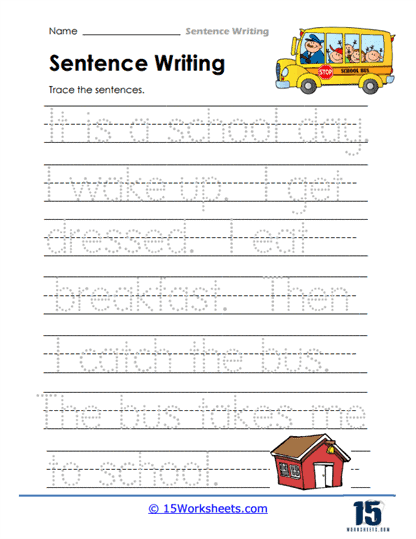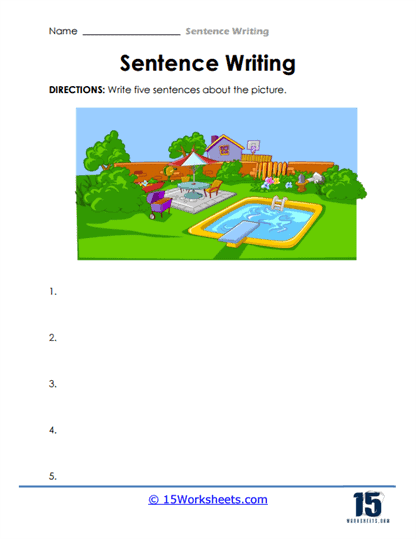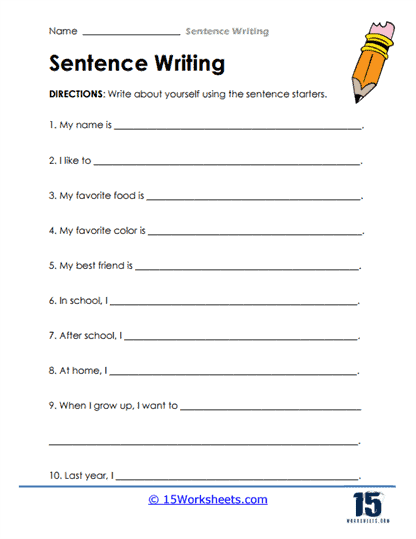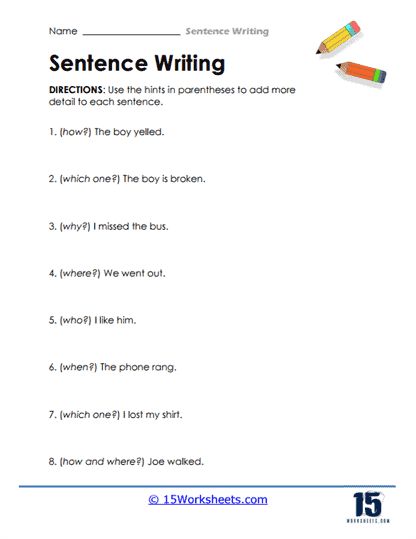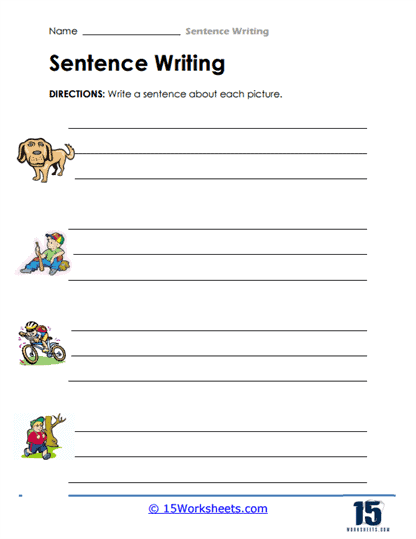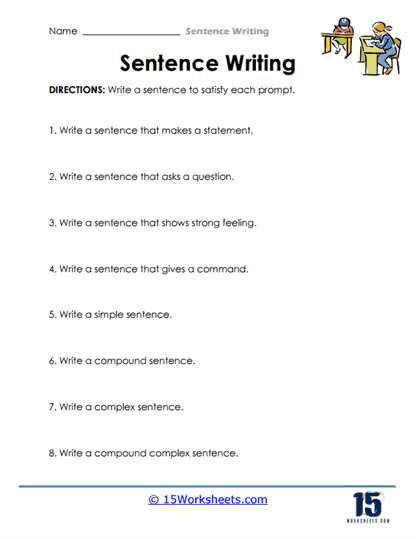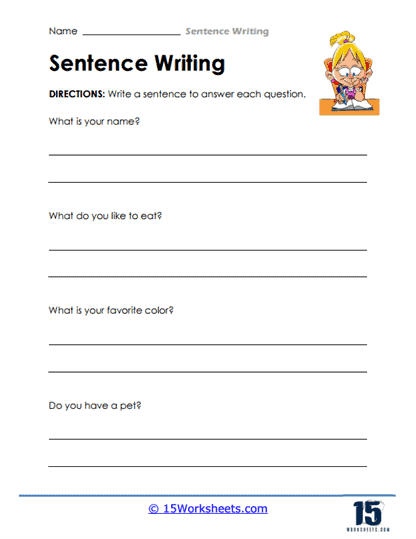Sentence Writing Worksheets
All About These 15 Worksheets
These worksheets are designed to engage students in various writing tasks, from simple sentence formation to more complex sentence structures and sentence expansion. They provide exercises and prompts to help students practice and improve their skills in constructing grammatically correct and meaningful sentences. The goal is to help students learn how to construct and build their own impactful sentences in their written language.
The primary exercise that you will see include:
Prompts or Instructions – These provide students with a specific task or topic to write about. The prompts can be open-ended, requiring students to come up with their own ideas, or they can be specific, guiding students to write sentences using particular vocabulary or grammar concepts.
Sentence Frames or Starters – These are partial sentences or phrases that students can use as a starting point to complete or build upon. Sentence frames help students structure their sentences and provide support when they are learning new sentence patterns or vocabulary.
Vocabulary or Grammar Focus – Sentence writing worksheets often focus on specific vocabulary words or grammar concepts. They may include target words or structures that students need to incorporate into their sentences to practice and reinforce their understanding.
Space for Writing – Worksheets typically provide blank spaces or lines for students to write their sentences. These spaces can be structured with prompts, guiding students to include specific elements, or they can be entirely blank, allowing students to freely express their ideas.
Worksheets offer focused practice opportunities for students to apply grammar rules, expand their vocabulary, and develop sentence construction skills. They also encourage students to think creatively and express their thoughts and ideas through written language. By engaging in meaningful writing tasks, students reinforce their understanding of grammar concepts and vocabulary, leading to better language acquisition and communication skills.
What Are the Rules of Sentence Writing?
While there are variations and additional considerations depending on the writing style and context, the following five rules provide a solid foundation for sentence construction:
Subject-Verb Agreement – A sentence should have a subject (the person, thing, or concept the sentence is about) and a verb (the action or state of being). The subject and verb must agree in number, meaning a singular subject requires a singular verb, and a plural subject requires a plural verb.
Example – The cat (singular subject) jumps (singular verb) on the table.
Capitalization and Punctuation – Sentences should begin with a capital letter and end with appropriate punctuation marks, such as a period, question mark, or exclamation mark, depending on the sentence type.
Example – What is your name?
Complete Thoughts – A sentence should express a complete thought or idea. It should have a subject and a predicate (the part of the sentence that contains the verb and provides information about the subject). In other words, a sentence should be able to stand alone and convey a clear message.
Example – She enjoys playing the piano.
Sentence Structure – Sentences should follow a logical structure and flow smoothly. They should be organized with proper word order and coherence. Common sentence structures include subject-verb-object (SVO), subject-verb-adjective (SVA), and subject-verb-adverb (SVA) patterns.
Example – The students (subject) studied (verb) diligently (adverb) for their exams (object).
Clarity and Conciseness – Sentences should be clear and concise, conveying the intended message without unnecessary complexity or ambiguity. Avoiding run-on sentences, excessive wordiness, or vague language enhances the readability and effectiveness of the sentence.
Example – The book is interesting and provides valuable insights.

